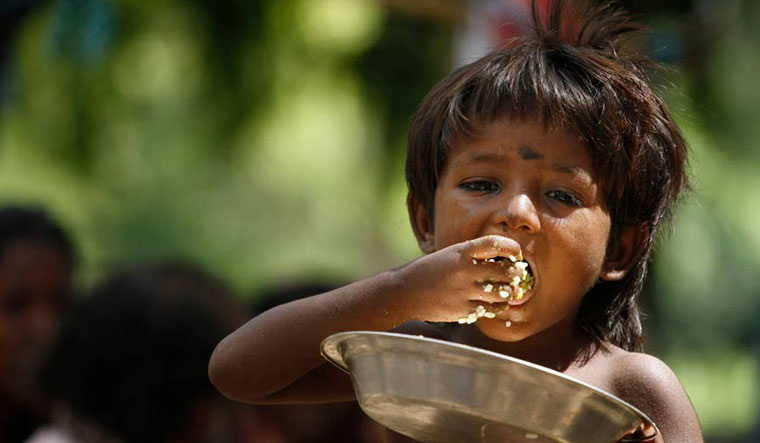Prime Minister Narendra Modi's flagship schemes in his first term like the free LPG connections, electricity, housing and the Swachata Abhiyan scheme seem to have paid off, more than electorally. But then, the programmes of UPA 2, too, have contributed to reduce poverty substantially, according to a report by the United Nations.
“Of the 1.3 billion people who are multidimensionally poor, more than two-thirds of them—886 million—live in middle-income countries. India, a lower-middle income country, experienced the fastest absolute reductions in poverty in the 2019 Multidimensional Poverty Index,” says a new report by the United Nations Development Programme (UNDP) and the Oxford Poverty and Human Development Initiative.
The Multidimensional Poverty Index (MPI) virtually redefines poverty by including in its ambit not just income but also indicators like nutrition, child mortality, years of schooling, school attendance, cooking fuel, sanitation, drinking water, electricity, housing and assets. India strongly improved its MPI in terms of housing assets, cooking fuel, sanitation and nutrition. The reports says on all these counts, there has been a “significantly reduced deprivation between 2009-2016” and India lifted 271 million people out of poverty during the period.
Quite likely, the schemes of providing free LPG connections to rural households as well as the electricity connections, along with the Swachata Abhiyan in just two years have tilted the scales in favour of Indians being lifted up from poverty in the context of these indicators.
The report, which must be sounding like music to the BJP government's ears, states that “India demonstrates the clearest pro-poor pattern at the subnational level: in absolute terms, the poorest regions reduced multidimensional poverty the fastest”. They have cited the examples of Jharkhand, where the incidence of multidimensional poverty nearly halved, falling from 74.9 per cent in 2005-06 to 46.5 per cent in 2015-16.
Another new is the finding that poverty reduction in rural areas has outpaced that in urban areas.
But then some things don't change that quickly. There is a higher percentage of girls who are multidimensionally poor and out of school than boys. But if it is any consolation, the figures for India are lower than the South Asian average for both boys and girls.
Shoko Noda, UNDP India Resident Representative, observed that the poorest parts of the country are more quickly lifting people out of poverty and it demonstrates India’s commitment to ensuring no one is left behind, in line with the Sustainable Development Goals and the government’s own priorities.
He explained that the MPI captures the huge progress India has made in reducing multidimensional poverty across the country and also gives a more complete picture of who is deprived, how they are deprived, and where they live.
But there is no reason to celebrate, for still, 373 million Indians continue to experience acute deprivations. Additionally, 8.8 per cent of the population lives in severe multidimensional poverty and 19.3 per cent of the population are vulnerable to multidimensional poverty.



